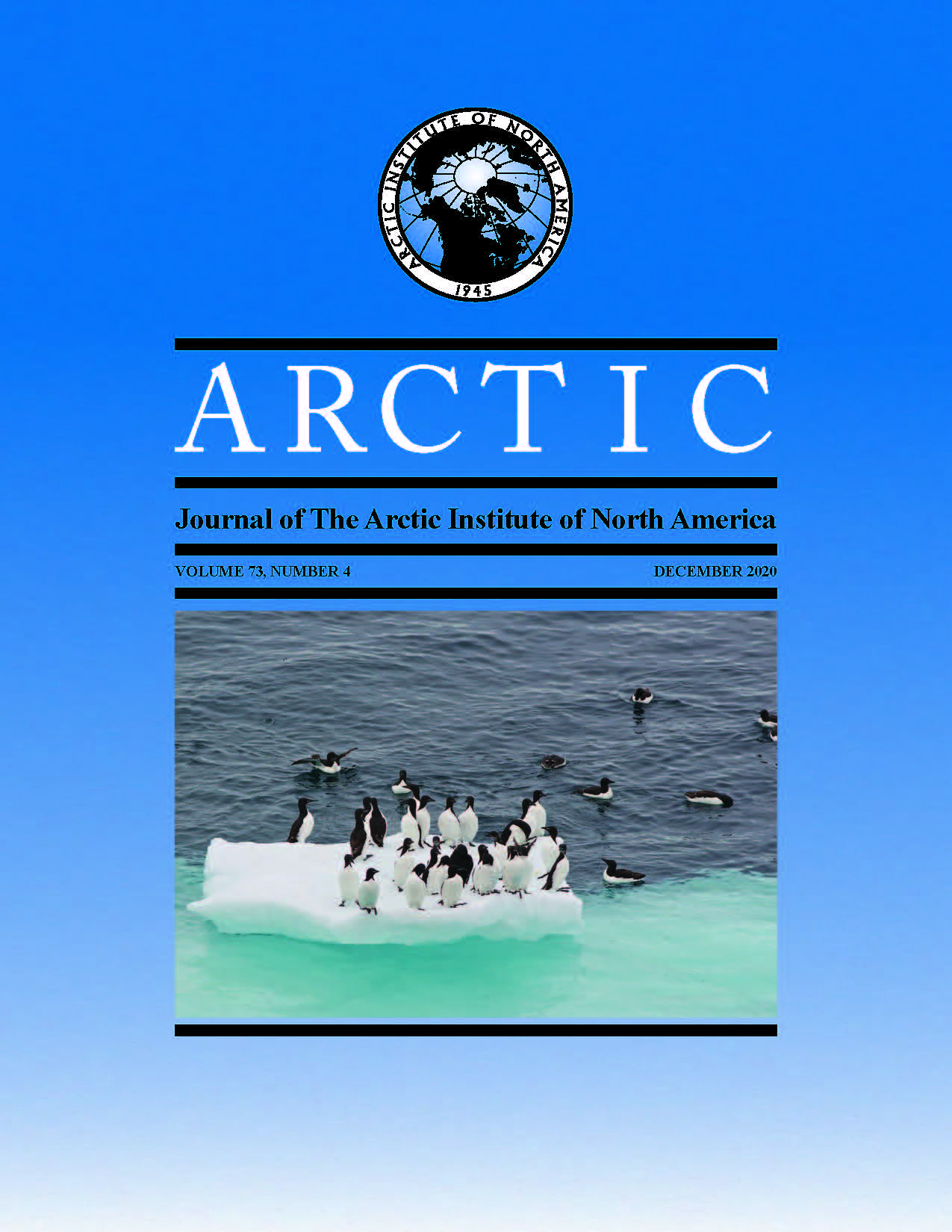Reproductive Parameters for Female Beluga Whales (Delphinapterus leucas) of Baffin Bay and Hudson Bay, Canada
DOI:
https://doi.org/10.14430/arctic71435Keywords:
age of sexual maturity; body growth; vaginal folds; corpora lutea; pseudocervices; reproductive activityAbstract
Monitoring marine mammal populations and their habitats is crucial for assessing population status and defining realistic management and conservation goals. Environmental and anthropogenic changes in the Arctic have prompted the pursuit for improved understanding of female beluga whale (Delphinapterus leucas) spatial and temporal reproductive patterns. There are relatively few estimates for female reproductive parameters of beluga whale populations across the Arctic, and those few that are available are outdated. Here we summarize female reproductive data from samples collected through Inuit subsistence hunts of three eastern Canadian Arctic beluga populations: High Arctic/Baffin Bay (HA), Western Hudson Bay (HB), and Cumberland Sound (CS) from 1989 to 2014. We grouped the CS and HA populations into a Baffin Bay region (BB) population based on similar body growth patterns and genetic similarity. Asymptotic body length of BB beluga whales (370.9 cm) was greater than HB whales (354.4 cm) as established from Gompertz growth curves fitted for whales ranging in age from 1 – 89 y. We did not detect a significant difference in average number of pseudocervices (8.6) between regions. Differences in average age of sexual maturity (ASM) and length at sexual maturity (LSM) were identified, with evidence of BB females maturing earlier than females from HB (probability method BB = 9.9 y versus HB = 11.0 and logistic method ASM50% HB = 9.99 and BB unresolved). BB females were also longer than HB females at maturing age (logistic LSM50%: BB = 314.5 cm vs HB = 290.3). Total corpora counts were strongly correlated with age, although the number of corpora (≥ 10 mm) suggests reproductive senescence between 40 and 50 y. Improved understanding of female reproductive patterns and knowledge of changes in the spatial and temporal timing of reproductive processes are fundamental for effective conservation and sustainable management of beluga whale populations.
Downloads
Published
Issue
Section
License
Copyright (c) 2020 ARCTIC

This work is licensed under a Creative Commons Attribution 4.0 International License.


